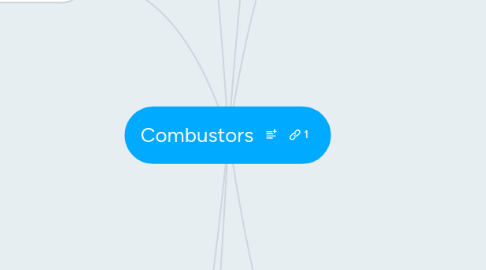
1. Prompt NOx
2. Stability of Combustion
2.1. Stability Loop
2.2. Recirculation
2.3. Air Admission
2.4. Fuel Injection
2.4.1. Spray Atomizer
2.4.2. Vaporizing System
2.4.3. Airblast Atomizer
2.4.4. Centrifugal Injection
2.5. Ignition
2.5.1. Ignition Process
2.5.1.1. Formation
2.5.1.2. Propagation
2.5.1.3. Light Around
2.6. Pressure Losses
2.6.1. Hot losses
2.6.2. Cold Losses
3. Heat
3.1. Heat Transfer
3.1.1. Convection
3.1.1.1. Internal
3.1.1.2. External
3.1.2. Radiation
3.1.2.1. Internal
3.1.2.1.1. Luminous Gases
3.1.2.1.2. Non - Luminous Gases
3.1.2.1.3. Fuel influence
3.1.2.2. External
3.1.2.2.1. Chambers
3.2. Cooling
3.2.1. Film Cooling
3.2.1.1. Total Head Devices
3.2.1.2. Splash-Cooling Rings
3.2.1.3. Machined Rings
3.2.1.4. Aerodynamics and calculations
3.2.1.5. Additional methods
3.2.1.5.1. Augmented Convection
3.2.1.5.2. Impingement cooling
3.2.1.5.3. Transpiration Cooling
4. Post-Combustors
4.1. Control Systems
4.1.1. Close looping
4.1.2. Open loop control
4.2. Turbofan Configuration
4.2.1. Mix then burn
4.2.2. Mix and burn
4.2.3. Partial mix then burn
4.2.4. Separate stream burners
4.3. Main Components
4.3.1. Flameholders
4.3.2. Fuel Injection
4.3.3. Ignition Systems
4.3.3.1. Hot shot injection
4.3.3.2. High energy spark
4.3.3.3. Catalyst system
4.3.4. Jet Pipe
4.3.4.1. Jet pipe cooling
4.3.5. Diffuser
4.3.6. Nozzle
4.3.7. Screech Baffle
5. Main Components
5.1. Diffuser
5.1.1. Faired diffuser
5.1.2. dump diffuser
5.1.3. hybrid diffuser
5.1.4. Vortex Controlled Diffuser
5.2. Flame Holders
5.3. Liner
5.3.1. Intermediate Zone
5.3.2. Dilution Zone
5.3.3. Width
5.3.4. Primary Zone
5.4. Casing
5.4.1. Casing Diameter
5.4.1.1. Pressure Loss Approach
5.4.1.1.1. Diffuser losses
5.4.1.1.2. Liner losses
5.4.1.2. Combustion Efficiency Approach
5.4.1.2.1. Evaporation
5.4.1.2.2. Mixing
5.4.1.2.3. Reaction
5.4.1.3. Altitude Relight Considerations
6. Type of Chambers
6.1. Tubular
6.2. Tubo-annular
6.3. Annular
7. Polutant Emissions
7.1. Carbon Dioxide (CO2)
7.2. Oxides of Sulphur (SO2)
7.3. Carbon Monoxide (CO)
7.4. Unburnt Hidrocarbons (HC)
7.5. Smoke Soot (C)
7.6. Oxides of Nitrogen (NOx)
7.6.1. Regulations
7.6.2. Staged Combustors
7.6.2.1. Rich Burn Rapid Quench
7.6.2.1.1. First Stage
7.6.2.1.2. Lean pre-mix
7.6.2.1.3. Second Stage
7.6.2.2. Configuration
7.6.2.2.1. Parallel staging
7.6.2.2.2. Series staging
7.6.3. NOx Types
7.6.3.1. Thermal NOx
7.6.3.2. Fuel Bond NOx
7.6.4. Water Injection
7.6.5. Hydrogen Availability
